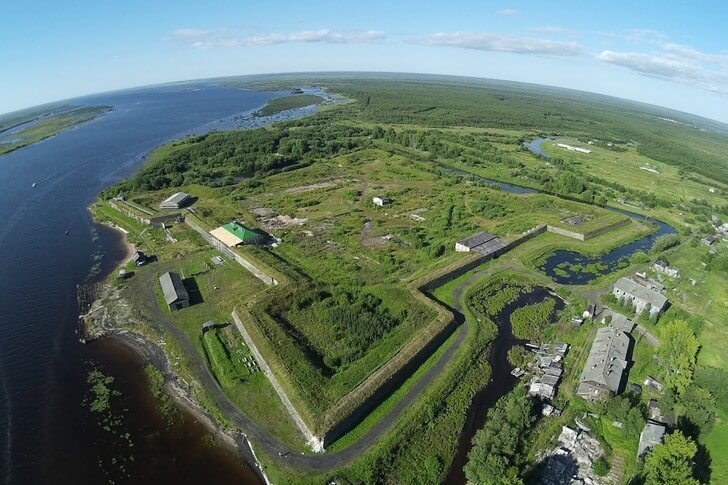The city of Arkhangelsk has been of strategic importance for the country since its foundation. At the same time, its remote position from other cultures affected self-development: there is still a lot of originality here. This applies to thematic museums, such as the Northern Sea Museum, or the Philharmonic, which has occupied an abandoned Lutheran church.
The locals do not forget, thanks to whom the best pages of their history were written. There are many statues, monuments and memorial signs in the city. Including Peter I, the seal - an animal that did not allow Arkhangelsk to die of starvation, outstanding fellow countrymen.
Tourists should visit theaters and religious institutions. Each has its own feature that allows you to distinguish this object from among similar ones. For example, the St. Nicholas Church is notable for its atypically bright wall painting.
What to see and where to go in Arkhangelsk?
The most interesting and beautiful places for walking. Photos and a short description.
- Small Korely
- Gostiny Dvor
- Cape Pur-Navolok
- Embankment of the Northern Dvina
- Prospect Chumbarova-Luchinsky
- Building design organizations
- Assumption Church
- St. Nicholas Church
- Northern Maritime Museum
- Art Museum
- Manor house of E. K. Plotnikova
- Museum of Artistic Exploration of the Arctic A. A. Borisova
- Drama Theatre. Lomonosov
- Pomeranian Philharmonic
- Arkhangelsk Puppet Theater
- Monument to Peter I
- Seal Monument
- Sea-river station
- Severodvinsky and Kuznechevsky bridges
- Novodvinsk fortress
Small Korely
Museum of wooden architecture in the open air. It was founded in 1964, but began to receive tourists only in 1973. It stands on the banks of the Northern Dvina. The area of the complex is about 140 hectares. As part of the project, buildings of different years and territories were collected. The collection also includes art objects of local peoples. There is a tourist center of the same name. Malye Korely is an object of cultural heritage of the Russian Federation.
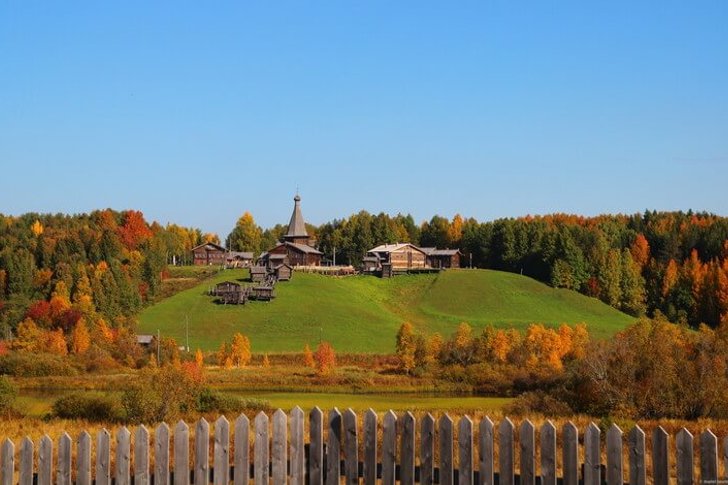
Gostiny Dvor
Built in the second half of the 17th century. The building served defensive and commercial functions. Subsequently, some walls were dismantled. Restoration was needed to prevent destruction. Gostiny Dvor is designated as an architectural monument of federal significance. The local history museum moved here in 1981. The exposition tells about the city and its surroundings. There are interactive programs and sightseeing tours.
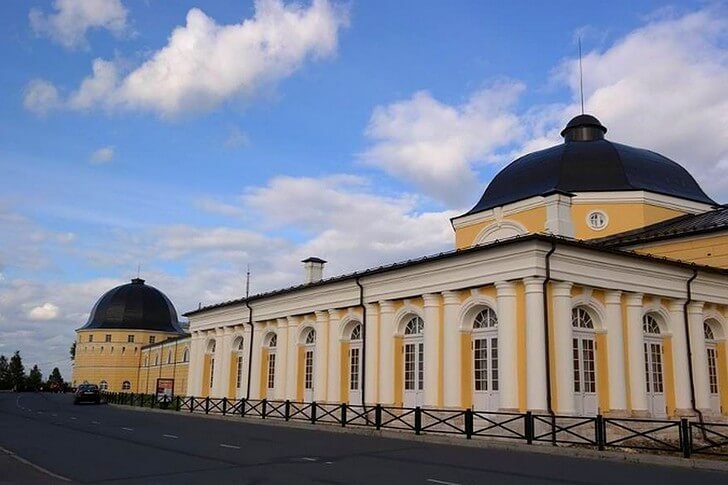
Cape Pur-Navolok
It is considered the birthplace of the city. The first Russian port was founded here. The area was strategically important and was used both for defense and for trade. In 1984, in honor of the 400th birthday of Arkhangelsk, a commemorative composition was installed on the cape. In the center is the bow of the boat, which moored to the shore. An attraction nearby is a partially preserved fortress that gave rise to the city.

Embankment of the Northern Dvina
One of the main streets of the city. The length is 7.5 km along the right bank of the river. In the past, it bore the name of Stalin's drummers, Stalin and Lenin. A place of rest for citizens, where all kinds of events are held in honor of major holidays. Every year in June, the Street Theater Festival takes place here. Several monuments have been erected: to the Solovetsky youths, to Admiral Kuznetsov, to a seal, to the victims of the intervention.

Prospect Chumbarova-Luchinsky
Located in the central part of the city. The length is 1200 meters. Former name - Pskovskiy prospect. It was renamed in honor of the activist and revolutionary. Partially closed to vehicles. It is considered a museum street, as there are many monuments and iconic buildings. Among others: a cultural heritage site - the House of Commercial Meetings, as well as a statue of the storyteller Stepan Pisakhov.
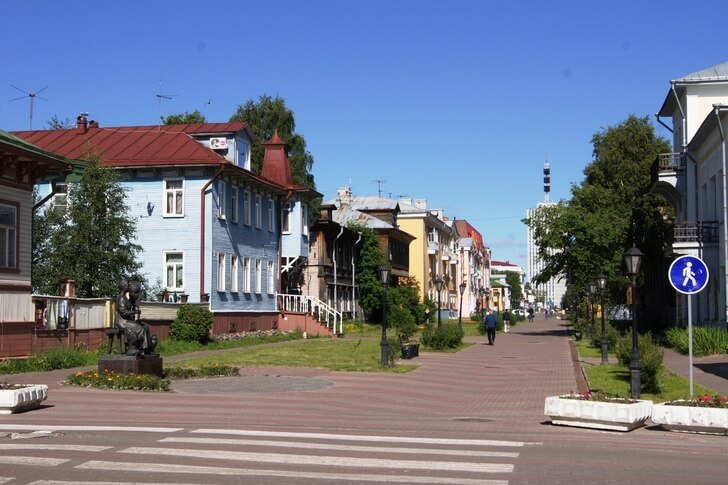
Building design organizations
Built in the city center. With 24 floors, it is the tallest in the area. It stands on the site of a merchant's mansion. We completed the project by the 400th birthday of Arkhangelsk - by 1984. Initially, the building was used for government needs. After the collapse of the USSR, it was turned into an office building. Since 2010, the lower part and the mast have been illuminated. It is included both at night and on holidays.
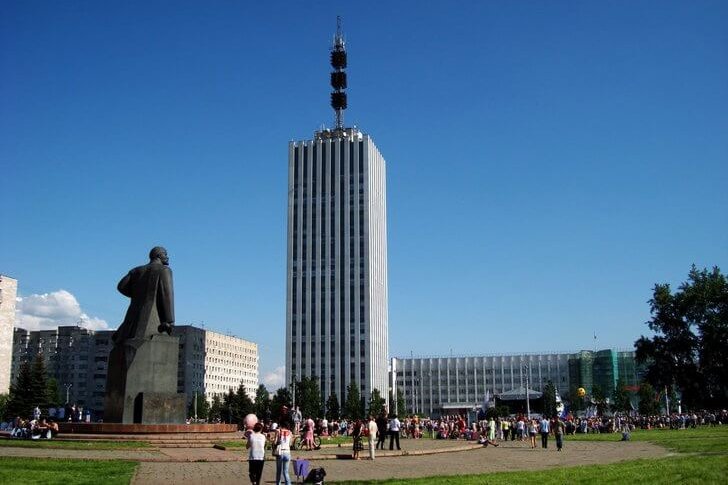
Assumption Church
Founded in 1624. The bell tower was built in the middle of the 18th century. The ground under it sank, and the structure began to look like a falling one. After the repair, the church did not last long - it was destroyed by the Bolsheviks. Since the foundation was preserved, in 1989 it was decided to restore the temple, which was consecrated in 2008. The main relic is the icon of the Assumption of the Mother of God, which is considered miraculous.
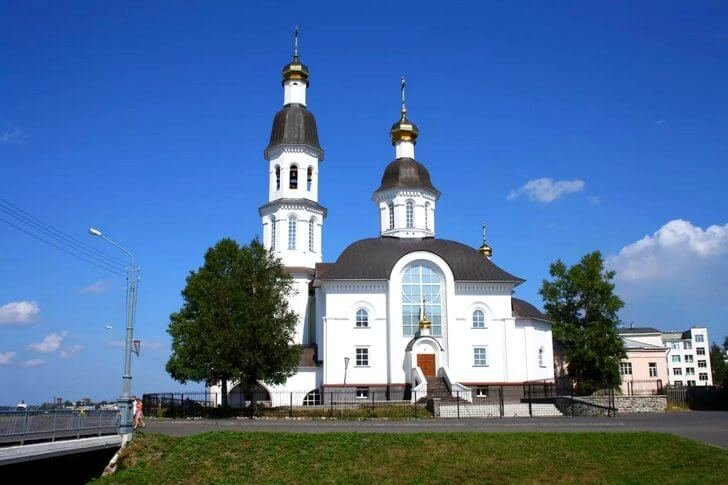
St. Nicholas Church
Year of construction - 1904. It was always bright and stood out from other buildings, even when it was closed. After Khrushchev visited the city, the facade was repainted in neutral colors. In the mid-90s, restoration work began, which returned the temple to its former appearance and original wall painting. The iconostasis is gilded, as are the domes. There are 14 bells in the belfry, the largest of them weighs 530 kg.

Northern Maritime Museum
Founded in the 70s of the XX century. Mini-exhibitions tell about the city itself, the development of the coast, sea routes, the main ports of the region, maritime affairs, and the Great Patriotic War. The expositions are regularly updated. The total number of exhibits of different departments is 20 thousand. In 2009 and 2010, the funds dispersed to other exhibition halls in the area during the restoration of the museum building.
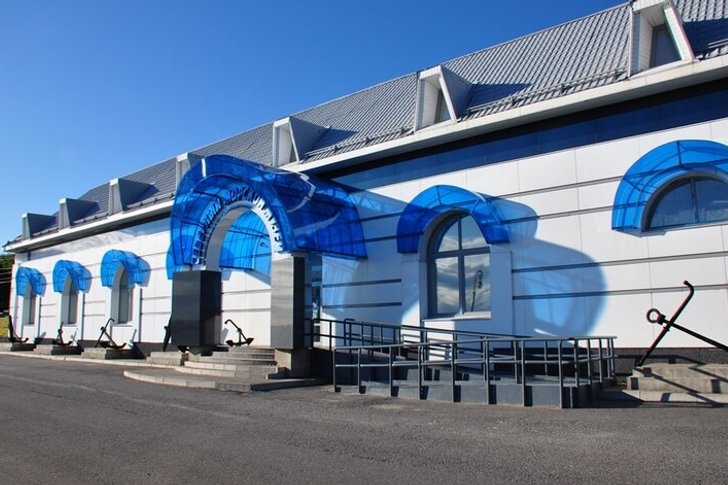
Art Museum
Opened in 1960. At the heart of his collection is a collection of two museums: local history and history and art. One of the most interesting is the department of ancient Russian art, where there are more than 5 thousand copies. There are many other areas, for example, folk art. Among others, paintings by Shiryaev, Lukoshkov, Kotov are kept. During the year, up to 30 exhibitions replace each other within the walls of the museum.

Manor house of E. K. Plotnikova
Built around 1794. Initially, the estate consisted of two stone houses. A century later, the owner changed. Shingarev began the restructuring of the estate, deciding to make the house a single entity. Once again, the estate changed at the beginning of the 20th century just under the supervision of Plotnikova. It currently has the status of an architectural monument. The Museum of Fine Arts has been located here since 1994.

Museum of Artistic Exploration of the Arctic A. A. Borisova
The first exhibition opened to visitors in 2002. The museum is named after the polar artist. He participated in expeditions and through his paintings allowed many people to see the Arctic. On the basis of Borisov's works, the museum's collection was assembled. There are currently five halls. In the first one you can get acquainted with the maps and routes of the expeditions, in the rest - with the work of Borisov and his followers.
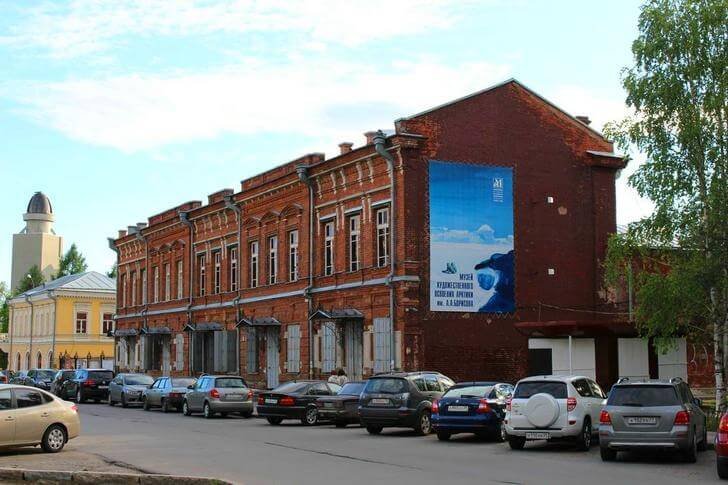
Drama Theatre. Lomonosov
The year of foundation is 1932. At the same time, the theater building was built in 1846, but there was no permanent city troupe. Arkhangelsk hosted touring bands until it got its own. The first performance was based on Gorky's work "At the Bottom". Since 1961 it has been named after Lomonosov. Almost throughout the 2000s, reconstruction was carried out, which was delayed due to lack of funding.
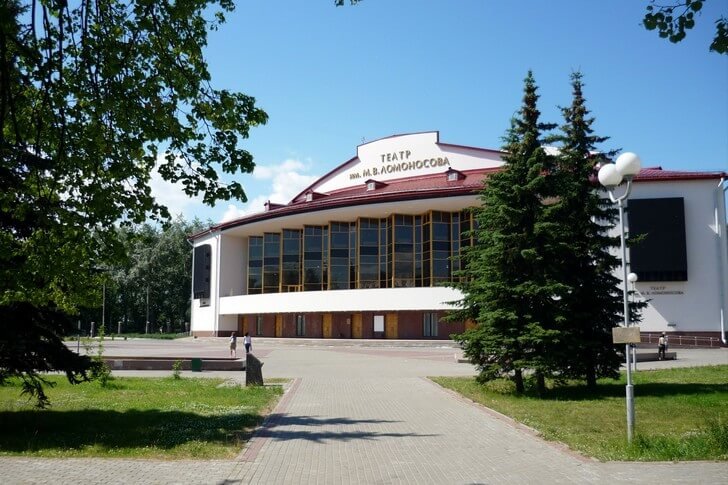
Pomeranian Philharmonic
It is located in the building of the former church - the Lutheran church named after St. Catherine in the city center. The cultural institution was founded in 1937. The building had been empty for almost 20 years. The chamber hall acquired its current appearance already in the 80s, when a major reconstruction was carried out. In 1991, German masters installed an organ for the Philharmonic, which greatly increased the attractiveness of local concerts.

Arkhangelsk Puppet Theater
Founded in 1933. For the first 30 years of its existence, it was located on the 3rd floor of the Drama Theater building. Subsequently, he received his own premises. The troupe regularly tours, including in Europe. The repertoire includes about 30 performances. The theater is the founder of the annual international festival "Snail". It has its own youth studio and literary lounge.
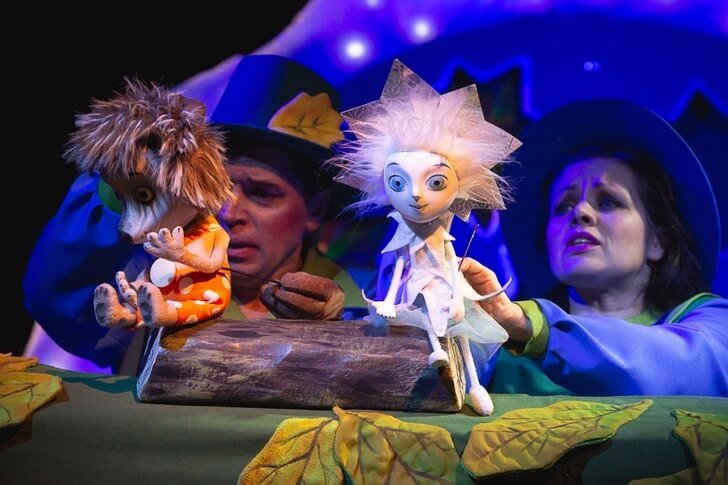
Monument to Peter I
Installed in 1914. It is one of the reduced copies of the classical work of the sculptor Antokolsky. The total height is 7.5 meters. The statue itself is 2.5 meters high. On three sides of the pedestal are the dates of three visits by the emperor to Arkhangelsk. On the fourth - the year when the competition associated with the creation of the monument takes place. Made in Paris from granite. Depicted on the 500 ruble bill.
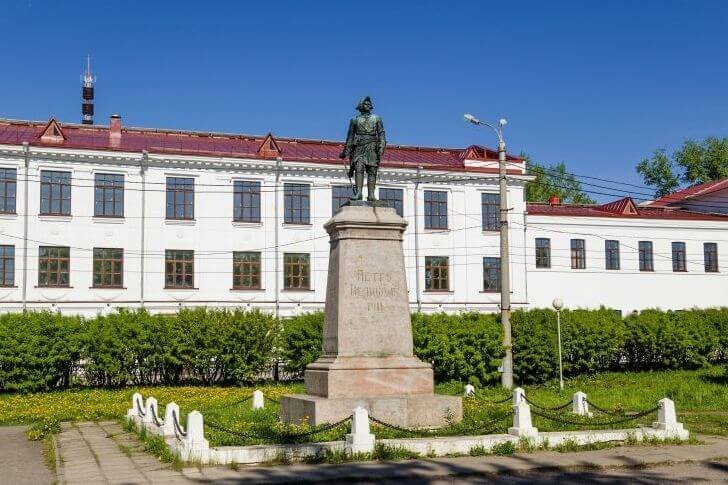
Seal Monument
Opened in 2010 on the Northern Dvina embankment. The idea to erect a monument to the seal arose immediately after the war. In those years, only thanks to the hunting of these animals, people in the starving city were able to survive. In addition, fat was used in medicine and for wiping guns on ships. Igor Skripkin was fully responsible for the project. At the base of the monument, a time capsule was buried with the names of those who contributed to the appearance of the monument.

Sea-river station
It is located on the embankment of the Northern Dvina, at the place where the river flows into the White Sea. These places are depicted on the banknote of 500 rubles. Accepts ships since 1972. In addition to river and sea, other transport arteries of the city converge here. During the Second World War, only this port received foreign medicines and weapons. One of the most popular restaurants in the city, Sever, still operates in the station building.

Severodvinsky and Kuznechevsky bridges
Built in 1964 and 1956 respectively. Kuznechevsky was transferred across the Kuznechikha River. It is pedestrian and automobile. Belongs to the type of hanging-beam. The total length is 385 meters with a width of 20 meters. Severodvinsky connects the banks of the Northern Dvina. Railroad tracks are laid along it, there are also lanes for cars and pedestrians. Length - 1098 meters. The northernmost drawbridge in the world.
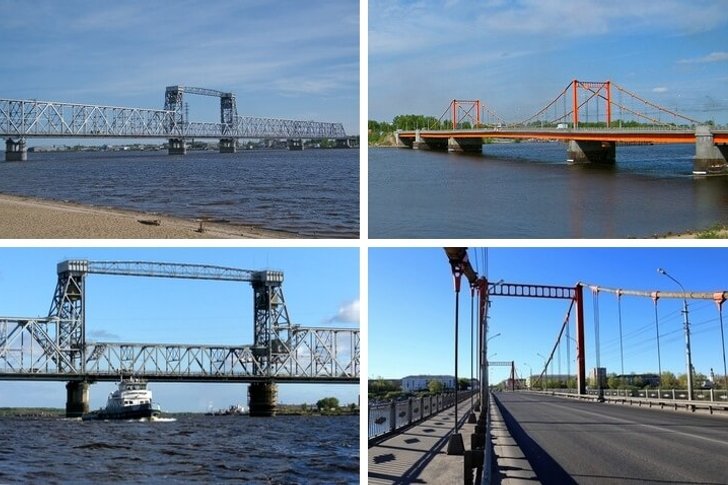
Novodvinsk fortress
Founded by Peter I and built in the early years of the 18th century. Erected on the island of Linsky Priluk. The initial purpose is to protect against the coming attack of the Swedes. After about 150 years from the date of commissioning, it was abolished. In Soviet times, there was a colony for children, then a correctional facility for adults. Now belongs to the local history museum. It has the status of an object of cultural heritage of the Russian Federation.
